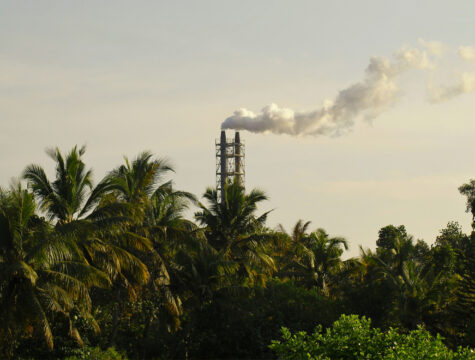The search for new sustainable development indicators stems from the need to develop novel global measurement systems alternate to GDP, which is no longer able to accurately capture the state of social, economic and environmental development of specific geographical areas. SPES partners from TARKI Institute and University of Florence made an in-depth assessment to provide two overviews. The first focuses on indicator selection practices of existing measurement frameworks; while the second on indicators that might be relevant to be included in a new dashboard structured according to the concept of sustainable human development and are suitable to serve as individual items for a composite index. The finding of this assessment are explained in the ” Report on mapping indicators and composite indices relevant to measure transition performances”.
Overview of relevant existing measurement frameworks
GDP, while a valuable economic indicator, fails to capture the full spectrum of human well-being, environmental sustainability, and social progress. Governments and policymakers should consider a broader set of metrics that account for factors like income inequality, environmental degradation, and the quality of life. To guide both policymakers and scholars in the selection and use of the most appropriate framework, TARKI and University of Florence Researchers provide :
- a long list of 44 initiatives, based on their relevance in policy-making and scientific research, building on the JRC Composite Indicators and Scoreboards, as well as the expertise of the consortium;
- a short list of 15 initiatives based on a 9-element list of criteria, including the ranking of the indicators by summing up the scores for each criterion.
Shortlisting these indicators aimed at collecting information that enables to find potential shortfalls or gaps in the raw data and to determine how they affect the composite indicator. In addition, the information is expected to help assess whether the geographical coverage could be enlarged, in other words, the index can be measured for other countries or regions as well, and whether it is possible to increase the frequency of the observations and the updates of the new release (feasibility of nowcasting).
In addition to these insights, authors propose to provide for academic debate, another relevant aspect is the policy implications for decision makers at national and international level. The state of the art of current mechanisms for measuring sustainable development and the transition towards sustainability illustrates, in addition to the complex dynamics of measuring these systemic processes, that the decision on which metrics we should use for measurement can influence the perspective through which current issues (e.g., social-economic inequalities, climate change, lack of participation) are addressed. At the same time, the choice of indicator not only involves aspects of a methodological nature but can also influence the space available for each dimension at stake, fostering desirable synergies and/or potential trade-offs between the pillars of sustainable human development. Stakeholder engagement and international collaboration are enabling researchers to develop new metrics that better reflect the diverse goals and values of societies worldwide. They call for the integration of these alternative measures into policymaking to ensure a more balanced and sustainable approach to development.
Short list of 15 indicators
- ASviS Composite Index – Evaluation of EU member states’ performance to reach the EU SDGs and the objectives of the Europe 2030 agenda, using composite indicators
- “Beyond GDP” Sustainable Development Index – Bridging the policy ambition gap between the development and the implementation of EU-wide sustainable transition strategy by the introduction of new evidence-based policy instruments to monitor member-states’ progress, options and possible actions. Alternatives: (1) ‘ambitious scenario’ with 5 statistically tested indicators (including GDP), (2) ‘transition scenario’ with 12 indicators of sustainable development. (3) A third, sensitive version of the ‘ambitious scenario’, where GDP was dropped completely
- Competitive Sustainability Index – To measure competitiveness in the context of the transition to a smart, green, climate neutral economy, addressing immediate needs for resource resilience and energy security as well as social equity, stability, public legitimacy and material prosperity.
- Genuine Progress Indicator – To replace or supplement GDP. The GPI is designed to take fuller account of the well-being of a nation, quantifying costs and benefits of environmental and social externalities.
- Green Growth Index – To assess impacts of green growth policy implementation and investments
- Just Transition Score – JTI combines the comprehensive, human-centered measurement of the Social Progress Index with data on countries’ consumption-based per capita CO₂ emissions.
- Legatum Prosperity Index – A tool for transformation, offering insight into how prosperity is forming and evolving across the world.
- OECD Better Life Index – To assess whether life is getting better for people in 37 OECD countries and 4 partner countries
- Planetary Pressure-adjusted Human Development Index – An experimental index that adjusts the HDI for planetary pressures in the Anthropocene. PHDI is the level of human development adjusted by carbon dioxide emissions per person (production-based) and material footprint per capita to account for the excessive human pressure on the planet.
- Social Progress Index – To measure social progress directly, rather than utilize economic proxies; to measure the outcomes that matter to the lives of real people, not the inputs; to create a holistic measure of social progress that encompasses the many aspects of the health of societies and is relevant to all countries.
- Sustainable Development Goals Index and Dashboards – Not an official SDG monitoring tool, but instead complements efforts of national statistical offices and international organizations to collect data on and standardize SDG indicators.
- Sustainable Development Index – The SDI retains the base formula of the HDI but places a sufficiency threshold on per capita income, and divides by two key indicators of ecological impact: CO2 emissions and material footprint, both calculated in per capita consumption-based terms and rendered vis-à-vis planetary boundaries. The SDI is an indicator of strong sustainability that measures nations’ ecological efficiency in delivering human development.
- Sustainable Human Development Index – To monitor Sustainable Human Development (SHD). It integrates two important sustainability-related dimensions that are missing in the HDI; the environment and freedom, as well as uses a novel method of aggregation.
- Sustainable Society Index – To be a comprehensive and quantitative method to measure and monitor the health of coupled human-environmental systems at national level worldwide.
- Transitions Performance Index – The tool is at the basis for a new model of prosperity for Europe and the world, focusing on resilience, inclusiveness and sustainability which supports the EU’s 2022 Annual Sustainable Growth Strategy.
Read the full document
This “Report 3.1 on mapping indicators and composite indices relevant to measure transition performances” for the project SPES has been prepared by the TÁRKI and University of Florence as part of Task 3.1 “Mapping individual indicators and composite indices that might be relevant for measuring transition performances” (WP3). the Report has been written by András Gábos, Team leader and researcher, TÁRKI, Orsolya Lelkes, researcher of the SPES Project, TÁRKI and Jacopo Cammeo, University of Florence.




